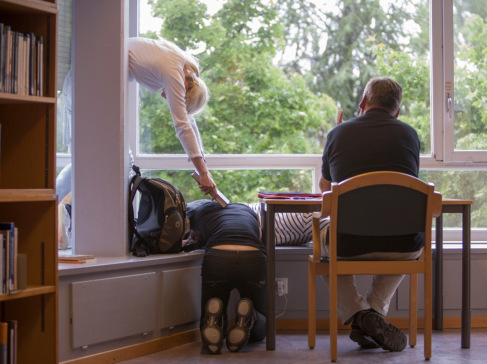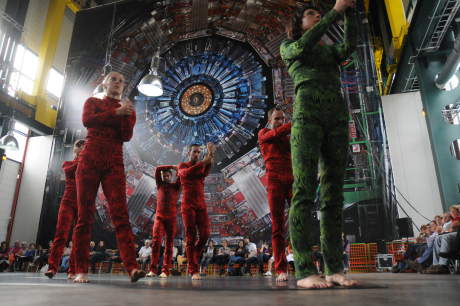Think of this post as a digest of responses to and analyses of the ‘science component’ of the Canadian federal government’s 2015 budget announcement made on April 21, 2015 by Minister of Finance, Joe Oliver. First off the mark, the Canadian Science Policy Centre (CSPC) has featured some opinions about the budget and its impact on Canadian science in an April 27, 2015 posting,
Jim Woodgett
Director, Lunenfeld-Tanenbaum Research Institute of Sinai Health SystemWhere’s the Science Beef in Canadian Budget 2015?
Andrew Casey
President and CEO, BIOTECanadaBudget 2015: With the fiscal balance restored where to next?
Russ Roberts
Senior Vice President – Tax & Finance, CATA AllianceOpinion on 2015 Federal Budget
Ron Freeman
CEO of Innovation Atlas Inc. and Research Infosource Inc. formerly co-publisher of RE$EARCH MONEY and co-founder of The Impact GroupWorkman-Like Budget Preserves Key National Programs
Paul Davidson
President, Universities CanadaA Reality Check on Budget 2015
Dr. Kamiel Gabriel
Associate Provost of Research and Graduate Programs at the University of Ontario Institute of Technology (UOIT), Science Adviser and Assistant Deputy Minister (ADM) of Research at the Ontario Ministry of Research & InnovationThe 2015 Federal Budget Targets Key Segments of Voters
I suggest starting with Woodgett’s piece as he points out something none of the others who chose to comment on the amount of money dedicated to the tricouncil funding agencies (Canadian Institutes of Health Research [CIHR], Natural Sciences and Engineering Research Council [NSERC], and Social Sciences and Humanities Research Council [SSHRC]) seemed to have noticed or deemed important,
The primary source of science operating funds are provided by the tricouncils, CIHR/NSERC and SSHRC, which, when indirect costs and other flow through dollars (e.g. CRCs) are included, accounts for about $2.5 billion in annual funding. There are no new dollars added to the tricouncil budgets this year (2015/16) but there is a modest $46 million to be added in 2016/17 – $15 million to CIHR and NSERC, $7.5 million to SSHRC and the rest in indirects. [emphases mine] This new money, though, is largely ear-marked for new initiatives, such as the CIHR Strategy on Patient Oriented Research ($13 million) and an anti-microbial resistant infection program ($2 million). Likewise for NSERC and SSHRC although NSERC enjoys around $16 million relief in not needing to support industrial postgraduate scholarships as this responsibility moves to MITACS with no funding loss at NSERC. Alex Usher of Higher Education Strategy Associates, estimates that, taking inflation into account, tricouncil funding will be down 9% since 2008. [emphasis mine] It is hardly surprising that funding applications to these agencies are under enormous competitive pressure. At CIHR, the last open operating grant competition yielded unprecedented low success rates of ~14% along with across-the-board budget cuts of grants that were funded of 26%. This agency is in year 1 of major program reforms and has very little wiggle-room with its frozen budget.
To be fair, there are sources other than the tricouncil for science funding although their mandate is for ‘basic’ science, more or less. Over the last few years, there’s been a greater emphasis on tricouncil funding that produces economic results and this is in line international trends.
Getting back to the CSPC’s opinions, Davidson’s piece, notes some of that additional funding,
With $1.33 billion earmarked for the Canada Foundation for Innovation [CFI], Budget 2015 marks the largest single announcement of Canadian research infrastructure funding. This is something the community prioritized, given the need for state-of-the-art equipment, labs, digital tools and high-speed technology to conduct, partner and share research results. This renewed commitment to CFI builds on the globally competitive research infrastructure that Canadians have built over the last 15 years and enables our researchers to collaborate with the very best in the world. Its benefits will be seen in universities across the country and across disciplines. Key research infrastructure investments – from digital to major science infrastructure – support the broad spectrum of university research, from theoretical and discovery to pre-competitive and applied.
The $45 million announced for TRIUMF will support the laboratory’s role in accelerating science in Canada, an important investment in discovery research.
While the news about the CFI seems to have delighted a number of observers, it should be noted (as per Woodgett’s piece) that the $1.3B is to be paid out over six years ($220M per year, more or less) and the money won’t be disbursed until the 2017/18 fiscal year. As for the $45M designated for TRIUMF (Canada’s National Laboratory for Particle and Nuclear Physics), this is exciting news for the lab which seems to have bypassed the usual channels, as it has before, to receive its funding directly from the federal government.
Another agency which seems to have received its funding directly from the federal government is the Council of Canadian Academies (CCA), From an April 22, 2015 news release,
The Council of Canadian Academies welcomes the federal government’s announcement of new funding for in-depth, authoritative, evidence-based assessments. Economic Action Plan 2015 allocated $15 million over five years [$3M per year] for the Council of Canadian Academies.
“This is welcome news for the Council and we would like to thank the Government for this commitment. Over the past 10 years the Council has worked diligently to produce high quality reports that support policy and decision-making in numerous areas,” said Janet Bax, Interim President. “We appreciate the support from Minister Holder and his predecessors, Minsters Goodyear and Rickford, for ensuring meaningful questions have been referred to the Council for assessment.” [For anyone unfamiliar with the Canadian science minister scene, Ed Holder, current Minister of State for Science and Technology, and previous Conservative government ministers, Greg Rickford and Gary Goodyear]
As of March 31st, 2015 the Council has published 31 reports on topics as diverse as business innovation, the future of Canadian policing models, and improving medicines for children. The Council has worked with over 800 expert volunteers from across Canada and abroad. These individuals have given generously of their time and as a result more than $16 million has been leveraged in volunteer support. The Council’s work has been used in many ways and had an impact on national policy agendas and strategies, research programs, and supported stakeholders and industry groups with forward looking action plans.
“On behalf of the Board of Governors I would like to extend our thanks to the Government,” said Margaret Bloodworth, Chair of the Board of Governors. “The Board is now well positioned to consider future strategic directions for the organization and how best to further expand on the Council’s client base.”
The CCA news is one of the few item about social science funding, most observers such as Ivan Semeniuk in an April 27, 2015 article for the Globe and Mail, are largely focused on the other sciences,
Last year [2014], that funding [for the tricouncil agencies] amounted to about$2.7-billion, and this year’s budget maintains that. Because of inflation and increasing competition, that is actually a tightening of resources for rank-and-file scientists at Canada’s universities and hospitals. At the same time, those institutions are vying for a share of a $1.5-billion pot of money called the Canada First Research Excellence Fund, which the government unveiled last year and is aimed at helping push selected projects to a globally competitive level.
“This is all about creating an environment where our research community can grow,” Ed Holder, Minister of State for Science and Technology, told The Globe and Mail.
One extra bonus for science in this year’s budget is a $243.5-million commitment to secure Canada’s partnership in the Thirty Meter Telescope, a huge international observatory that is slated for construction on a Hawaiian mountain top. Given its high price-tag, many thought it unlikely that the Harper government would go for the project. In the end, the telescope likely benefited from the fact that had the Canada committed less money, most of the economic returns associated with building it would flow elsewhere.
…
The budget also reflects the Harper government’s preference for tying funding to partnerships with industry. A promised increase of $46-million for the granting councils next year will be largely for spurring collaborations between academic researchers and industrial partners rather than for basic research.
Whether or not science becomes an issue in the upcoming election campaign, some research advocates say the budget shows that the government’s approach to science is still too narrow. While it renews necessary commitments to research infrastructure, they fear not enough money will be left for people doing the kind of work that expands knowledge but does not always produce an immediate economic return.
…
An independent analysis of the 2015 budget prepared by Higher Education Strategy Associates, a Toronto based consulting firm, shows that when inflation is factored in, the money available for researchers through the granting councils has been in decline since 2009.
Canadian scientists are the not only ones feeling a pinch. Neal V. Patel’s April 27, 2015 article (originally published on Wired) on the Slate website discusses US government funding in an attempt to contextualize science research crowdfunding (Note: A link has been removed),
In the U.S., most scientific funding comes from the government, distributed in grants awarded by an assortment of federal science, health, and defense agencies. So it’s a bit disconcerting that some scientists find it necessary to fund their research the same way dudebros raise money for a potato salad. Does that migration suggest the current grant system is broken? If it is, how can we ensure that funding goes to legitimate science working toward meaningful discoveries?
On its own, the fact that scientists are seeking new sources of funding isn’t so weird. In the view of David Kaiser, a science historian at MIT, crowdfunding is simply the latest “pendulum swing” in how scientists and research institutions fund their work. Once upon a time, research at MIT and other universities was funded primarily by student tuition and private philanthropists. In 1919, however, with philanthropic investment drying up, MIT launched an ambitious plan that allowed local companies to sponsor specific labs and projects.
Critics complained the university had allowed corporate interests to dig their claws into scientific endeavors and befoul intellectual autonomy. (Sound familiar?) But once WWII began, the U.S. government became a force for funding, giving huge wartime grants to research groups nationwide. Federal patronage continued expanding in the decades after the war.
Seventy years later, that trend has reversed: As the federal budget shrinks, government investment in scientific research has reached new lows. The conventional models for federal grants, explains University of Iowa immunologist Gail Bishop, “were designed to work such that 25 to 30 percent of studies were funded. Now it’s around 10 percent.”
I’m not sure how to interpret the Canadian situation in light of other jurisdictions. It seems clear that within the Canadian context for government science funding that research funding is on a downward trend and has been going down for a few years (my June 2, 2014 posting). That said, we have another problem and that’s industrial research and development funding (my Oct. 30, 2013 posting about the 2013 OECD scorecard for science and technology; Note: the scorecard is biannual and should be issued again in 2015). Businesses don’t pay for research in Canada and it appears the Conservative and previous governments have not been successful in reversing that situation even marginally.


![[downloaded from http://www.quantumdiaries.org/2010/02/14/lets-draw-feynman-diagams/]](http://www.frogheart.ca/wp-content/uploads/2014/10/Feynman-diagram-300x254.png)